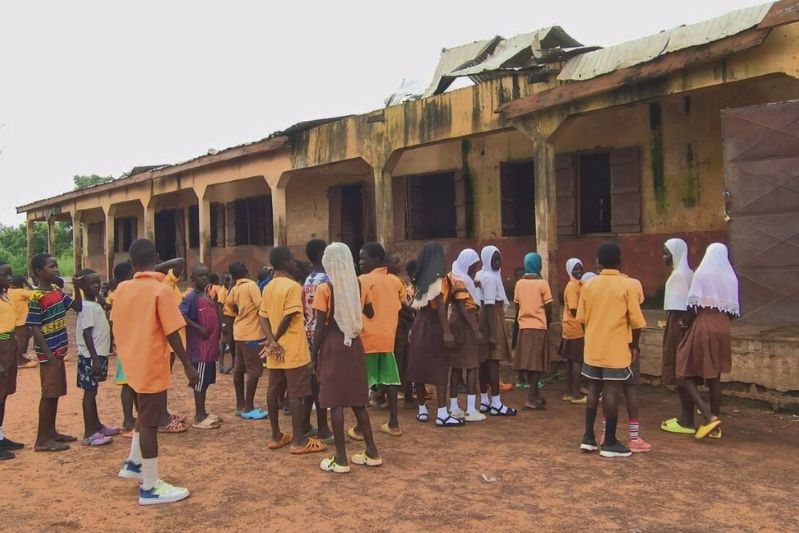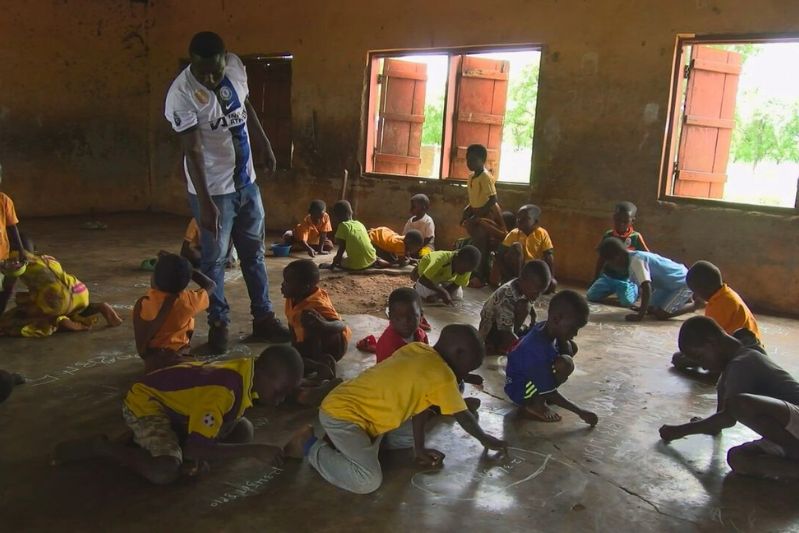Trending on social media - Ghana Schools of Shame
In the remote Kantu DA Primary School in northern Ghana, a teacher, faced with lack of basic resources, is forced to think beyond conventional teaching methods. With no chalkboard to rely on, she taps into a remarkable, yet unconventional skill—'air-writing'—to engage her students.
This is the storyline in a video that was broadcasted on social media in Ghana. It is one of a series capturing the impoverished conditions of schools to raise awareness with the local government and prompt them into action.
The videos ended up reaching more than 2 million viewers, trending for weeks after weeks.
Innovation Amidst Adversity
Behind the videos were School for Life, a lead CSO advocating for quality basic education to out-of-school children in deprived and hard-to-reach communities in Ghana, and an Education Out Loud grantee under Operational Component 2.
School for Life had noted the inadequacy of school infrastructure in the region and decided to work with the media to produce short videos about the learning conditions in some of the project schools. A series of videos called 'Schools of Shame' was soon produced and broadcasted.
“We immediately saw an increased attention from the local government and citizens alike following the airing of the videos. And one very tangible result is that within a few weeks after the airing of the videos, each of the project districts received 300 double desks from the Ministry of Education,”
says Amadu Zulyaden-Project Manager in School for Life.
According to him the metropolitan, municipal and district assemblies have further committed to complementing the Ministry's efforts e.g. by increasing their own supply of furniture to the schools.
Government Responds to Public Pressure
Feedback from the videos grew like a snowball. Individuals and groups began to respond to the issues raised by the videos and to support efforts to address the challenges.
“As an illustration, a member of the Kolinvai community based in the United States began fundraising to provide the community with a proper school block. Also, following an earlier media story on Awalia Basic School in the East Mamprusi Municipality, an association for girls called Girl Guides Ghana reached out to support the school with supplementary reading materials for both numeracy and literacy and supported the school with oral health materials and a cash donation to help address some of the challenges facing the school,”
states Amadu Zulyaden.
“I am so happy to still be in school. At one point, I wanted to stop because we had nothing to sit on, and the school building leaked whenever it rained. Thanks to these videos and the attention they created, that is no longer the case. I am truly grateful,"
shared Yiwelle Monica, a girl pupil in the Kantu community.
Watch the Impactful Videos
Ghana's Schools of Shame: Teacher uses 'air writing' to teach pupils due to absence of chalkboard.
Schools of Shame: Only 33 pupils out of 257 attend classes regularly at Kpandu Pri.Sch due to hunger.
Ghana’s Schools of Shame: A child’s tears for a table and a chair.
The Probe: Ghana's Schools of shame: Tackling the 2.3 million desk deficit in Ghana's basic schools.
Ghana's Schools of Shame: Bakpaba DA primary school to receive furniture after JoyNews story.
Search #GhSchoolOfShame on social media for more videos
Fact: Learning conditions in rural schools
The 2021 Population Census in the country revealed that about 1 million Ghanaian children aged 4-18 are out of school due to inequities in education. And the Ministry of Education estimates that about 596,000 Kindergarten pupils and 1.28 million pupils in primary schools lack desks.
Another 425,000 pupils, 30% of Junior High School students, are without writing spaces, bringing the total number of basic school pupils without desks to about 2.3 million. Northern Region leads with 213,252 pupils without desks followed by Upper East and Bono East (Africa Education Watch). Yet no major action was taken to address the issues.
In the state of Ghana, specifically in the 5 regions of the north, School for Life alongside its consortium members; YEfL-Ghana and the GDCA, an EOL/OC2 grantee fights for education for all. In this regions, basic education suffers pressing issues. The availability of good school buildings, teachers, teaching and learning materials is heavily biased towards rural, marginalised areas.
Read more about School for Life Quality Education | School For Life Ghana | Tamale.

